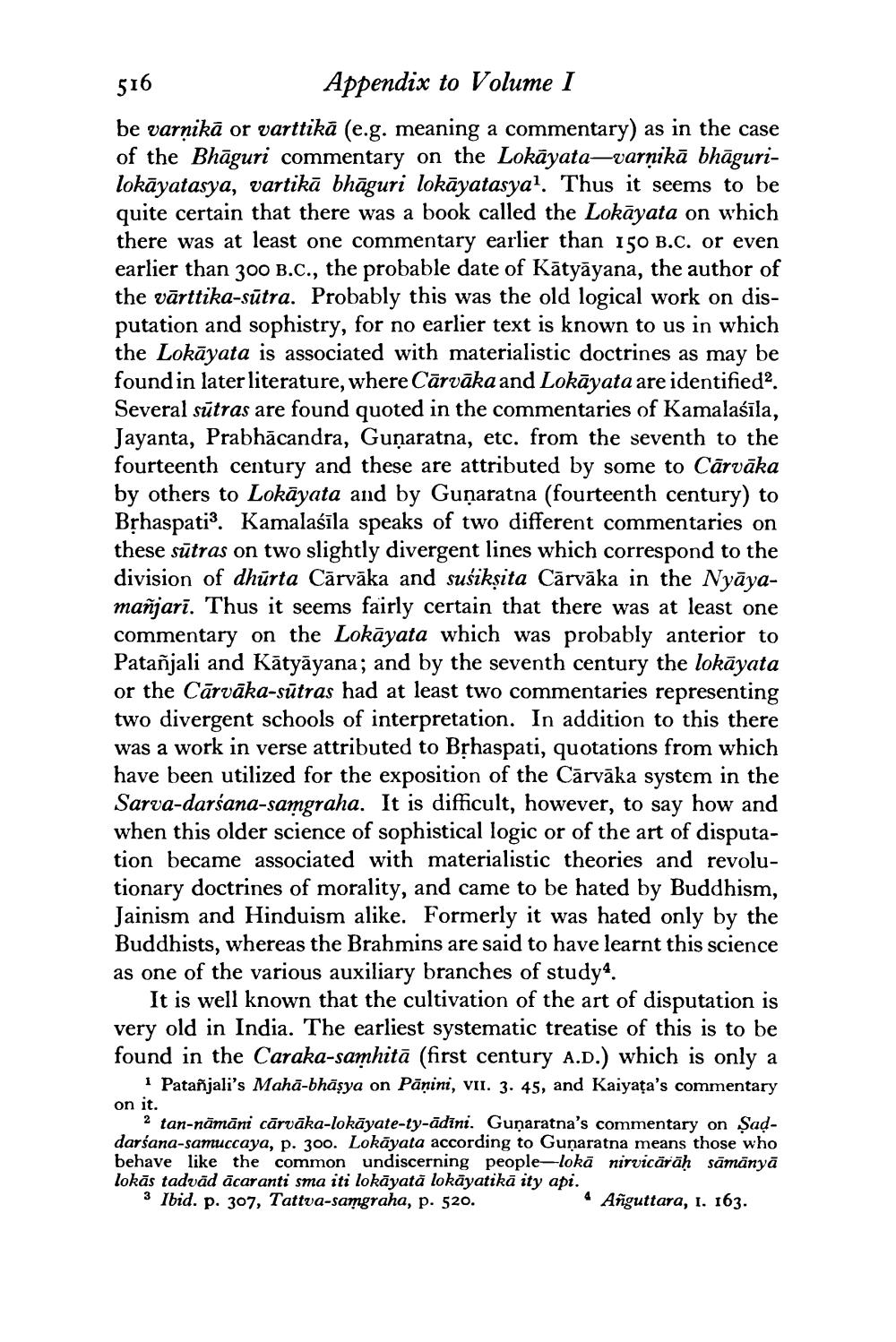________________
516
Appendix to Volume I
be varṇikā or varttikā (e.g. meaning a commentary) as in the case of the Bhaguri commentary on the Lokayata-varṇikā bhāgurilokāyatasya, vartikā bhāguri lokāyatasya1. Thus it seems to be quite certain that there was a book called the Lokayata on which there was at least one commentary earlier than 150 B.C. or even earlier than 300 B.C., the probable date of Katyāyana, the author of the vārttika-sūtra. Probably this was the old logical work on disputation and sophistry, for no earlier text is known to us in which the Lokayata is associated with materialistic doctrines as may be found in later literature, where Cārvāka and Lokāyata are identified2. Several sutras are found quoted in the commentaries of Kamalasila, Jayanta, Prabhācandra, Gunaratna, etc. from the seventh to the fourteenth century and these are attributed by some to Cārvāka by others to Lokāyata and by Gunaratna (fourteenth century) to Bṛhaspati3. Kamalaśīla speaks of two different commentaries on these sutras on two slightly divergent lines which correspond to the division of dhūrta Cārvāka and susikṣita Cārvāka in the Nyāyamañjarī. Thus it seems fairly certain that there was at least one commentary on the Lokayata which was probably anterior to Patanjali and Katyāyana; and by the seventh century the lokāyata or the Carvaka-sutras had at least two commentaries representing two divergent schools of interpretation. In addition to this there was a work in verse attributed to Bṛhaspati, quotations from which have been utilized for the exposition of the Cārvāka system in the Sarva-darśana-samgraha. It is difficult, however, to say how and when this older science of sophistical logic or of the art of disputation became associated with materialistic theories and revolutionary doctrines of morality, and came to be hated by Buddhism, Jainism and Hinduism alike. Formerly it was hated only by the Buddhists, whereas the Brahmins are said to have learnt this science as one of the various auxiliary branches of study.
It is well known that the cultivation of the art of disputation is very old in India. The earliest systematic treatise of this is to be found in the Caraka-samhita (first century A.D.) which is only a
1 Patanjali's Maha-bhāṣya on Panini, VII. 3. 45, and Kaiyaṭa's commentary
on it.
2 tan-nāmāni cārvāka-lokāyate-ty-adini. Gunaratna's commentary on Saḍdarśana-samuccaya, p. 300. Lokāyata according to Gunaratna means those who behave like the common undiscerning people-lokā nirvicārāḥ sāmānyā lokās tadvad acaranti sma iti lokāyatā lokāyatikā ity api.
3 Ibid. p. 307, Tattva-samgraha, p. 520.
4
Añguttara, 1. 163.




